The dishwasher is edging ever closer to becoming a necessity in UK homes, led by millennial consumers, but how can retailers encourage more mature customers to purchase the appliance?
For some time dishwasher penetration has languished at around 40% of UK households but it is finally showing signs of wider acceptance, albeit at a slow pace.
In fact, according to appliance experts, dishwashers experienced the strongest growth of all major domestic appliances in 2017.
Sponsored Video
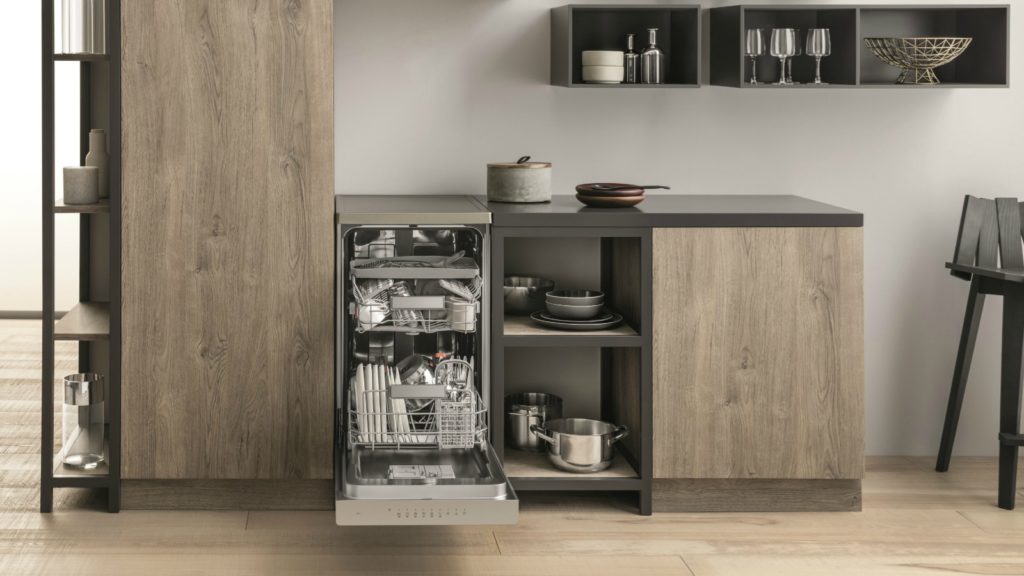
Available either as a built-in or freestanding model the slimline dishwasher from Hotpoint measures 450mm. It features 10 place settings and a 3D Zone wash
Category and trade marketing manager for dishwashers at Whirlpool, Charles Bernstein comments: “According to Euromonitor International, dishwasher penetration in the United Kingdom currently sits at 43.1%, an increase from 41.5% in 2016. In 2017, volume sales of built-in dishwasher increased by 7.4% to reach 647,300 units.”
Millennial boost
Experts have suggested younger purchasers may be responsible for this growth, as those who have grown up with a dishwasher, now simply can’t live without one.
Steve Mcdonald, business director of the freestanding division at Hoover Candy UK says: “We believe it can be attributed to both an improved performance and a huge surge in millennials turning to kitchen appliances that make day-to-day tasks much easier.”
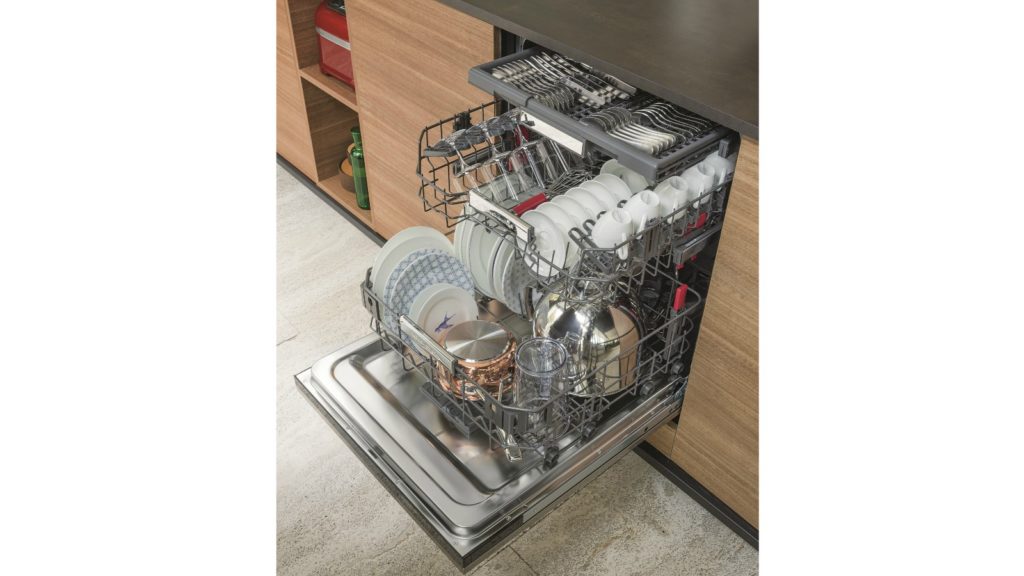
The 600 mm fully-integrated dishwasher from KitchenAid (KDSDM 82143 (UK)) features Dynamic Clean Pro which uses high-pressure water jets to remove burnt-on food. It uses 8.5 litres of water and operates at 43dB.
And senior Hotpoint brand manager Catherine Balderson agrees: “Younger generations and first-time buyers are having a positive effect on the dishwasher market and many cannot be without one. It is seen as an essential kitchen appliance.”
So it could be argued, it is the more mature customer that needs education on how a dishwasher benefits their lifestyle.
Sale barriers
The major issue to greater dishwasher penetration is that there are still significant barriers to sales, as consumers can unfairly perceive the appliance to be space-consuming and energy hungry.
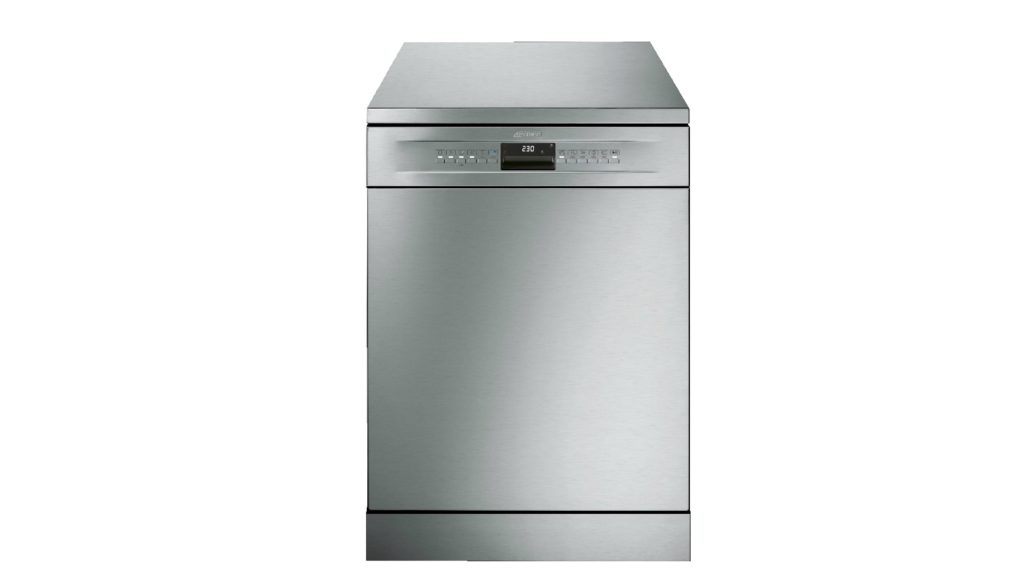
The DF613PX from Smeg boasts A +++ energy rating and ‘FlexiZones’ to wash half a load, using less water, power and energy. It has quick 27 minute, Super Quick and Eco Quick settings
Catherine Balderson of Hotpoint comments: “Research commissioned by Hotpoint has found that of the 1,066 surveyed participants, 42% believed a dishwasher is a waste of energy, while over 55% expressed that they do not have enough space for one.
“These insights demonstrate there is still much work to be done for the dishwasher to win over the nation.”
And Steve Macdonald of Hoover Candy believes the industry needs to join together, manufacturers together with kitchen showrooms, to help win over the minds and wallets of UK consumers, commenting: “It is now ours and the retailer’s role to continue to raise awareness.”
Promoting efficiency
So how can retailers dissuade consumers’ belief that dishwashers are energy hungry? Manufacturers have created models that work on as little as six litres per wash.
So retailers are encouraged to explain how they are more water, and therefore energy efficient, than washing by hand.
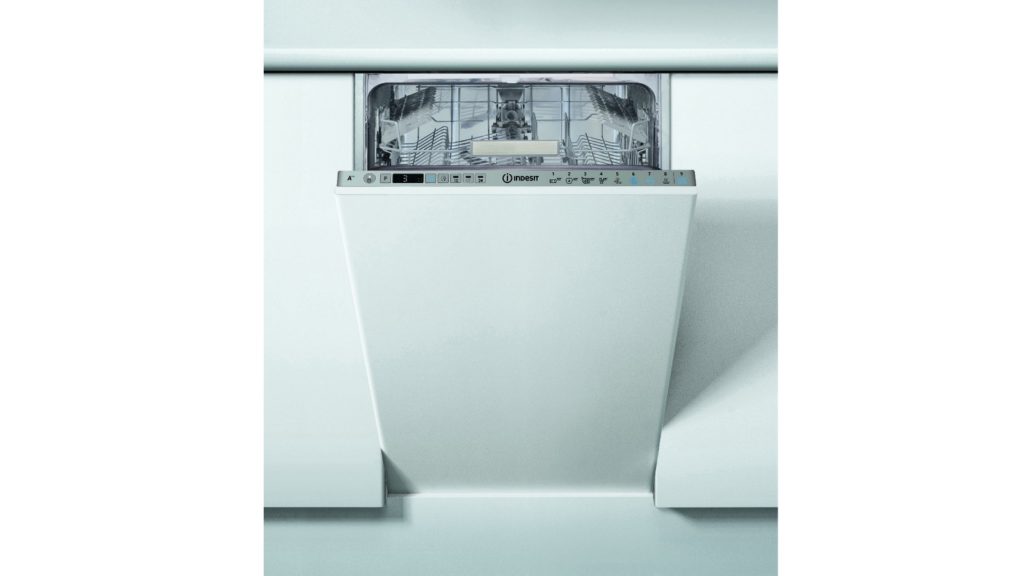
The Indesit slimline Push &Go dishwasher benefits from a low noise output of just 44dB, quieter than washing by hand, so can be operated at night
Charles Bernstein of Whirlpool offers some statistics: “Research conducted by Bonn University found that a Whirlpool dishwasher enables the consumer to clean over 156 items using just six litres of water, compared to the average of up to 103 litres used to wash 140 items by hand.”
But for consumers who need a more visual explanation, Indesit has recently collaborated with the Energy Saving Trust to provide retailers with point of sales messaging.
It has been created to educate consumers on resource-saving appliances and built their awareness of how they can benefit from purchasing one.
Equally, simple bottles of water could do the trick. Catherine Balderson says: “Placing the bottles of water on top of a dishwasher is an effective way to demonstrate to the consumer just how little water the appliances consumers per cycle.”
And consumers also need to better understand the latest technological developments in sprays as Balderson adds: “Research has found that 23% of UK consumers frequently rinse their dishes before loading them into the dishwasher.”
In fact, dishwashers have been developed to provide powerful, targeted jets of water to remove burned on food, so there is no need for pre-rinsing.
Nearly a quarter of experienced buyers, then, need re-education when considering their next purchase.
In fact, such has been the development of dishwashers, with internal fittings to better cater for glassware, large pots and pans and even to sterilise baby bottles, there is no need for consumers to wash by hand at all.
Show space-saving
Even for those who don’t believe they can fit a dishwasher into their kitchen project may be pleasantly surprised.
A raft of 450mm wide models, have now enabled designers to include them in small areas.
Brand manager of Indesit Sara Bazeley points out: “A slimline 4500mm dishwasherr is the perfect companion for a compact space, and measuring just the width of an average tea towel, it can relive the worktop of cluttered dishes and store them until they are ready to be washed.”
So by showing consumers the width of the appliance and encouraging them to use the dishwasher as storage, it could encourage a consumer into a purchase.
Saving time
Of course, the greatest asset of a dishwasher is time-saving. By handing the task of washing and drying pots and pans to an appliance, it saves valuable hours away from the kitchen sink.
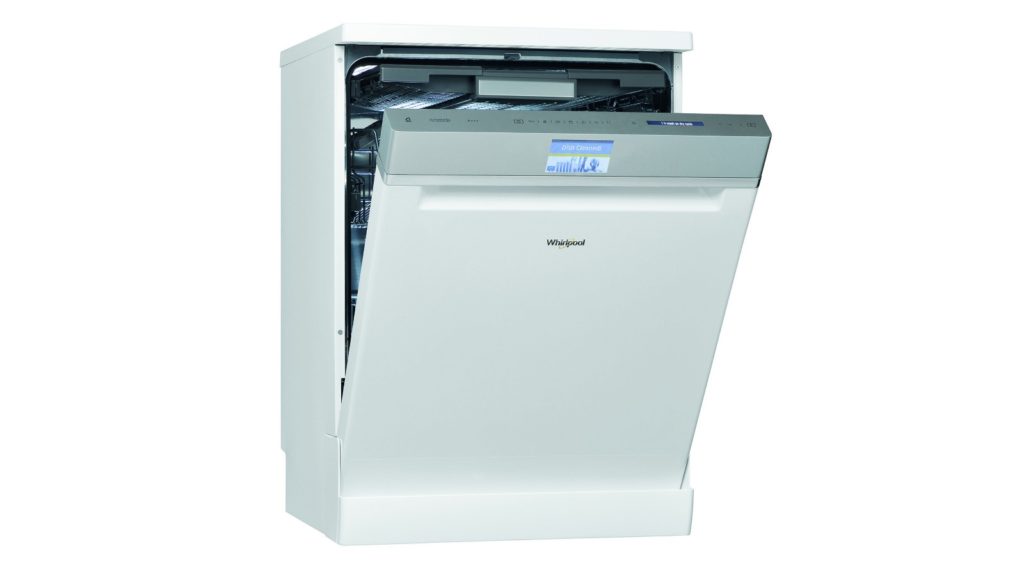
The Whirlpool W Collection SupremeClean freestanding dishwasher (WFF 4033 DLTG) is Whirlpool’s first connected dishwasher. It features MySmart Display and the user is able to remotely set, start and monitor the appliance’s progress
But, of course, the appliance can wash pots and pans at a much faster rate than handwashing.
And brand manager of Indesit Sara Bazely points out: “We are seeing consumers opting for appliances that can get the job done in the fastest possible time.”
In fact, product manager at Smeg Lucy Dunstan points out time-saving is key in her company’s portfolio adding: “The DF613PX has 27 minute, super quick and Eco quick settings, which are great for larger families.”
Operating at quiet noise levels, dishwashers don’t even have to work through the day, for added convenience they can work through the night offering clean dishes for the morning.
Brand manager of Indesit Sara Bazeley offers the example: “The Indesit slimline Push &Go dishwasher benefits from a low noise outpout of just 44dB, meaning that it is queiter than the noise that is created by hand washing and drying.
“The slimline dishwasher eases the pressure of modern-day life and is suitable for running at night without waking the family and allowing users to take advantage of lower energy tariffs where available.”
This message of time-saving and convenience will resonate with all consumers, whether busy families or single professional households alike.
Get connected
And, of course, the most efficient models in terms of resource use and convenience to offer the greatest time-saving benefits are continues are connected models. And there is a continuing march towards the adoption of smart appliances.
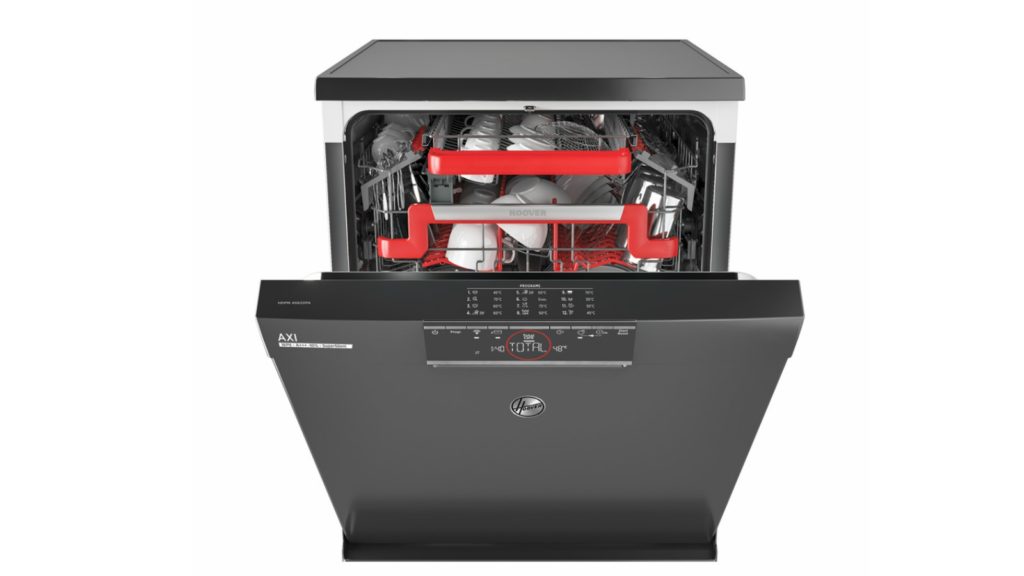
The Hoover HDPN 4S603PX AXI is voice operated and reportedly the UK’s first to work with Alexa and Google Home, alongside its Hoover Wizard app. It can use AI to predict the best wash
In fact, Hoover Candy reports a connected dishwasher (HDPN 4S603PX AXI) is fast-becoming its best-selling model.
Steve Macdonald explains: “It is the first in the UK to work with Alexa and Google Home, alongside our own Hoover Wizard app. Not only can it be controlled through voice assist, it has also been developed with artificial intelligence. The dishwasher can predict the best washing programme.”
Such has been the investment by manufacturers into the smart home, Whirpool has launched its first connected dishwasher and Miele has introduced selected models which can be controlled by an app, as part of its G700 collection.
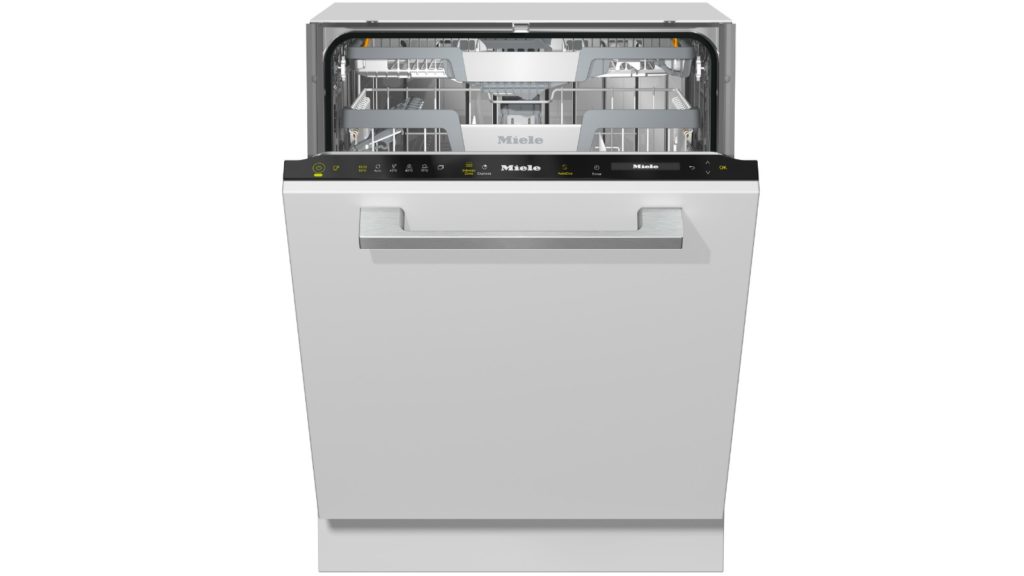
With an A+++ -10% energy rating, this dishwasher is part of Miele‘s G7000 collection, It not only includes the Miele AutoDos with PowerDisk, WiFiConn@ct and AutoStart functions but also a 3D MultiFlex tray and FlexLine baskets
And towards the end of this year, Smeg will introduce a Wi-Fi connected dishwasher, alongside ovens, which will join its existing smart wine chiller.”
According to Lucy Dunstan of Smeg, the dishwasher “will send push notifications about the current status of the programme. Depending on the type of tableware, the SmegConnect dishwasher will give recommendations about the selection of the best washing programme.”
Certainly, connected appliances will capture even more interest from millennial consumers.
And if more mature consumers can be encourage to purchase, the dishwasher market can only grow in strength.
If you consider that three in five people who walk into a showroom probably don’t own a dishwasher, there’s not a better time to show them how essential it is to the home.



